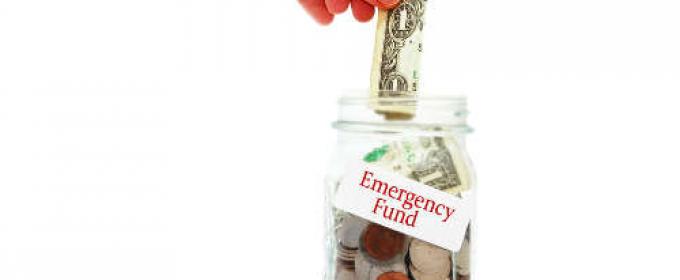The emergency fund is a crucial part of anyone’s financial portfolio. It exists to cushion you from a heavy financial blow from something like a hospital bill. Because of this weight, many of us want to take a large sum and invest it into something that will produce more returns than a regular savings account. However, doing so could greatly endanger your emergency savings. After all, the greater the yield, the higher the risk involved.
This simple fact is one that comes along with every form of investment. From 401(k)s to IRAs, the risk involved in investing large quantities under the assumption you’ll need to access it quickly in the face of disaster means a higher chance for loss is a poor decision that could leave you in dire straits. Just look back to 2007 before the economy plummeted. Almost every institution was touting the safety of throwing money at high yield accounts. Many were promised liquidity equal to that of cash. While this did work, it only did so until 2008 when the crisis really set in. Suddenly, everything was frozen. All of the investors that bought into the assumed safety of high risk investment couldn’t access their money for a period of months to even years. Value losses of 9 to even 30 percent hit hard and didn’t recover for well over three years. Just imagine having to explain that all the safety money is gone to your spouse.
With this in mind, it becomes clear why the emergency fund is better off in a savings account and not a heavily fluctuating market. Even if it isn’t emergency money so much as a sum you’re going to need access in a relatively short amount of time, it is better off in a FDIC-insured savings account. No matter how tempting it is to aim for high yield, remember that the safety fund is there strictly for safety and accessibility. There is no room for risk when you are trying to create a steady, underlying support system.
Even still, there are a few outlets that can be pursued to pull in more than just a savings account. Simply researching options at places like Mint.com provides you with organized lists comparing return rates of money market accounts, savings accounts and short-term CDs. You’d definitely be able to find returns around 1% which is far more than simply doing nothing with the amount.
If that is still not satisfying enough, look to ultrashort-term bank loan funds and bond funds. These are not recommended, however, as they do come with increased risk in the form of rising interest rates. As soon as the Federal Reserve opts for higher targets for those rates, your funds will fall prey to setbacks. The best way to know if you’re ready for such a gamble to is to take a risk tolerance questionnaire. These are extremely short questions designed to help you analyze your money across bonds, stocks and short-term reserves to determine what is right for your current situation. For the best, turn to reputable places like Vanguard.
Some safe alternatives include commercial bridge loans and promissory notes, but these are so complex that most do not have the time or the patience to do the research and analysis necessary to make a smart decision. Promissory notes, for example, involve buying off a small portion of a company’s debt with the understanding they will pay you back. Unfortunately, this falls through if the company fails. If you feel up to the task, certainly look into them, however be aware that they do not offer the same liquidity nor the same protection as a FDIC-insured account.
The most important thing to keep in mind when dealing with growing your money is that it takes time. Very rarely will you go to bed with $100 and wake up with $100,000. Even the self-made rich men like Warren Buffet spent years carefully investing and thinking through their decisions. The fact that you are even setting aside money for a catastrophe means you are doing better than most. The quick road is certainly tempting but we have all seen firsthand how detrimental that can be should the economy fluctuate, like it always does.
If you must put something together for a high yield investment, pull out a lump of money just for that purpose. It can be completely written out so that, win or lose, you’re not breaking the bank in any way. Implement some rules, though, so if it does to well, it benefits you. For instance, all of the extra earnings can be placed in your emergency fund or in your retirement fund. Just be smart and don’t blow it on silly things like electronics.
Since it is safer to have the emergency fund grow slower, remember to still keep it separate from your other accounts. This greatly reduces the chances you’ll be tempted to pull from it without needing it. Likewise, it should be liquid, have a low volatility and be insured. The liquidity means that you can convert it extremely quickly. Should you need to pay off a hospital bill, one month to obtain funds is far too long, leaving you in a shaky position. Low volatility simply means the daily fluctuations will be small and hardly noticeable. Reducing the chance you’ll only have $400 to pull instead of the $1,000 you started with puts anyone’s mind at ease. Finally, insuring it means that even if the bank it is stored in fails, you still get to keep $250,000 of it. Though storing money under your bed might seem like a good idea, a house fire could wipe everything away in a matter of seconds. Remember that this fund is for your financial stability. Make sure you treat it with the respect it deserves.


